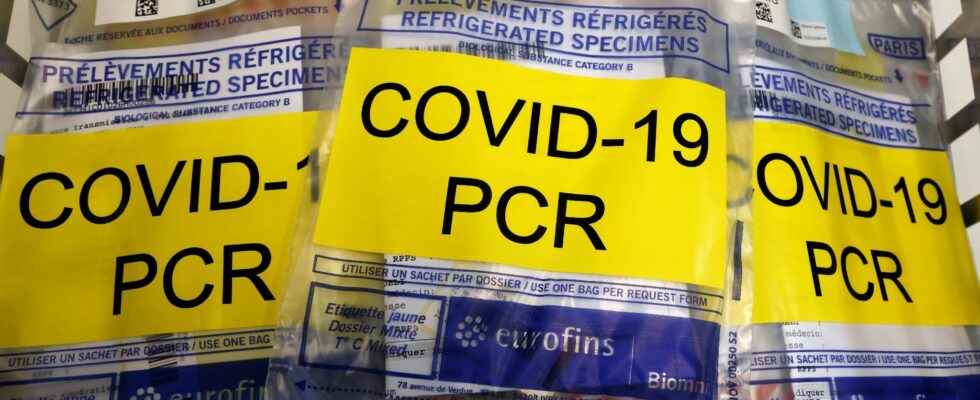According a report from the Department of Research, Studies, Evaluation and Statistics (Drees) published on February 2, the number of Covid screenings carried out in France in 2022 – RT-PCR tests, antigens and saliva combined – is lower than in 2021. There are actually just over 140 million in 2022, against 160 million the previous year, a decrease of 17%. Data “to be taken with tweezers”, moderates Cédric Arvieux, infectious disease specialist at the Rennes University Hospital.
“Several factors may be at the origin of this decline”, details the public institution. Stronger vaccination of the population, less dangerousness of the Omicron variant or the end of automatic reimbursement for tests from October 2021 could, among other things, contribute to less encouraging the French to be tested. The introduction of the health pass in the summer of 2021, which caused a peak in screenings (peaking at 5 million tests per week in August), can also explain the discrepancy with the figures recorded the following year, while the pass mandatory health ended in January 2022. “The drop in screening was mainly felt on RT-PCR tests”, notes the DREES, since their use has dropped by 36% in one year.
Do these figures illustrate a gradual abandonment of screening by the French, as the epidemic becomes more and more discreet? “The figures for a concrete year are very difficult to interpret, especially when they are so recent”, tempers Cédric Arvieux. The Drees report “does not take into account the use of self-tests by the population, which has become much more democratized in 2022 but which is very difficult to quantify”, he points out.
There is nevertheless a logic in the information delivered by the DREES. “It is not surprising that we see a decline in the use of “classic” screening compared to self-tests. This is explained in particular by the lesser severity of the effects of the Omicron variant on infected people, pushing people to test themselves alone”, interprets the researcher. “We have observed this phenomenon a lot among nursing staff,” he says.
Fewer tests, but more positive cases?
Despite a drop in the number of tests performed professionally in 2022, “the number of new cases detected was higher for each month of 2022 compared to 2021,” the report said. The SI-DEP database thus recorded three times as many positive reports in 2022, with 29 million positive tests, compared to barely 8 million in 2021.
This data, which may seem contradictory with regard to the drop in classic screenings mentioned above, “is however logical”, assures Cédric Arvieux. “This means that the French got tested more wisely in 2022, often when the suspicion was really strong and correlated with symptoms,” he analyzes. Again, the fact that the Omicron variant took over the Delta variant, causing less serious development of the virus, may have encouraged the French to be less worried in the event of mild suspicion and to turn to self-tests as a first step. time.
Overall, “what in epidemiology is called ‘big data’ should be interpreted with great caution”, repeats the scientist. “Health data takes a very long time to ‘clean up’. We will need several more months to gain perspective on that of 2022,” he concludes.
